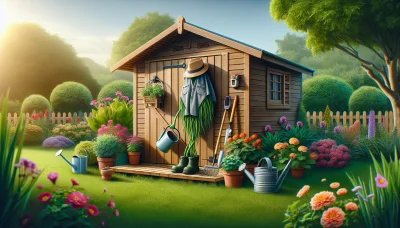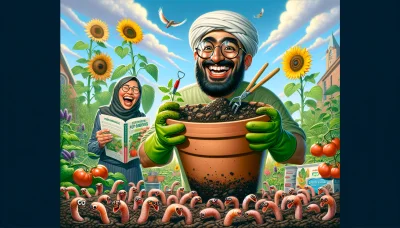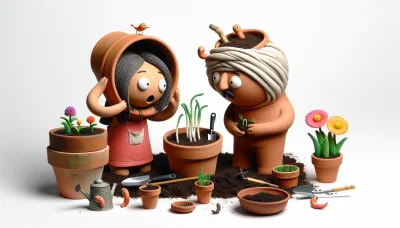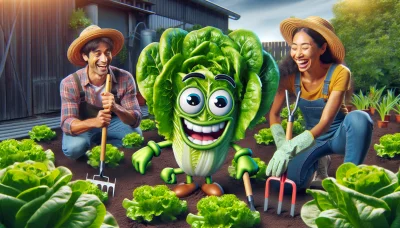When do you plant tomatoes Quiz
Test Your Knowledge
Question of
When Do You Plant Tomatoes?
Timing is crucial when it comes to planting tomatoes for a successful harvest. Planting too early can expose the seedlings to lingering cold temperatures and frost, which can hinder growth or kill the plants. Conversely, planting too late may not give the tomatoes enough time to mature before the first fall frost. Generally, tomatoes should be planted after the last frost date in spring when the soil has warmed sufficiently. Understanding your local climate and weather patterns is key to choosing the right planting time to ensure a bountiful harvest.
Understanding Your Growing Zone
Gardeners can identify their USDA hardiness zone by checking the USDA's Plant Hardiness Zone Map, which is easily accessible online. This map divides North America into 13 separate zones based on the average annual minimum winter temperature. Each zone is 10°F warmer (or colder) in an average winter than the adjacent zone. Knowing your hardiness zone is crucial for planting tomatoes because it determines the best planting times and the varieties that will thrive in your area. Tomatoes have specific temperature and light requirements, and planting them in their ideal hardiness zone ensures they have the optimal conditions for growth, leading to a successful harvest.
The Best Time to Plant Tomatoes
- Zones 3-4: Plant indoors in late March to early April, transplant outdoors in late May to early June.
- Zones 5-6: Start seeds indoors in early to mid-March, transplant outdoors in mid to late May.
- Zones 7-8: Begin indoors in early March, move plants outside in April to early May.
- Zones 9-10: Seeds can be started indoors in January-February, with outdoor transplanting in March to April.
- Zones 11+: Tomatoes can often be grown year-round, with careful attention to the hottest months.
Starting Tomatoes Indoors
Starting tomato seeds indoors offers numerous benefits that can lead to a more successful and fruitful gardening experience. By beginning the growth process indoors, gardeners can get a head start on the growing season, especially in regions with shorter warm periods. This method allows for better control over the seedlings' environment, including temperature, moisture, and light, ensuring stronger and healthier plants. Additionally, growing tomatoes indoors initially helps protect the young plants from outdoor pests and extreme weather conditions, reducing the risk of disease and stress. This careful nurturing can result in earlier and potentially more abundant harvests, making it a rewarding endeavor for both novice and experienced gardeners alike.
Transplanting Tomatoes Outside
To properly transplant tomato seedlings into your garden, start by selecting a cloudy day or late afternoon to reduce transplant shock. Begin the process by hardening off the seedlings, which involves gradually exposing them to outdoor conditions over a week. Start with an hour of outdoor exposure, then increase it by an hour each day. Ensure the garden soil is well-amended with compost and is moist. Dig holes slightly deeper than the seedlings' current pots, spacing them about 2 feet apart to allow for growth. Gently remove the plants from their containers, being careful not to disturb the root ball. Plant them deep enough so that the lowest set of leaves is just above the soil surface, as this encourages stronger root systems. Water the seedlings immediately after planting to help settle the soil around the roots. Consider adding a layer of mulch around the plants to retain moisture and regulate soil temperature. With proper care, your transplanted tomatoes will soon thrive in their new outdoor environment.
Caring for Tomato Plants
- Water regularly, aiming for at least 1 inch per week, but avoid overhead watering to reduce disease risk.
- Use a balanced fertilizer to encourage growth. Apply a slow-release fertilizer at planting and supplement with a water-soluble fertilizer every two weeks.
- Prune excess leaves to improve air circulation and reduce disease. Focus on removing leaves near the bottom of the plant.
- Support plants with stakes or cages to keep them upright and promote healthy air circulation.
- Mulch around the base of the plant to retain moisture, regulate soil temperature, and reduce weed competition.
- Monitor for pests and diseases regularly. Take action promptly to mitigate any issues.
- Harvest tomatoes when they are fully colored and firm to the touch for the best flavor.
Common Tomato Planting Mistakes
| Mistake | Tip to Avoid |
|---|---|
| Planting tomatoes too early | Wait until after the last frost date to plant outdoors. |
| Not considering sunlight | Choose a spot that gets at least 6-8 hours of sunlight daily. |
| Overcrowding plants | Space plants about 24-36 inches apart to allow for growth and air circulation. |
| Ignoring soil health | Enrich soil with compost and ensure it is well-draining. |
| Skipping support structures | Use cages or stakes to support plants and prevent diseases. |
| Over or under watering | Water regularly, aiming for 1-2 inches per week, and adjust based on rainfall. |
| Forgetting to mulch | Apply a 2-3 inch layer of mulch around plants to retain moisture and control weeds. |












